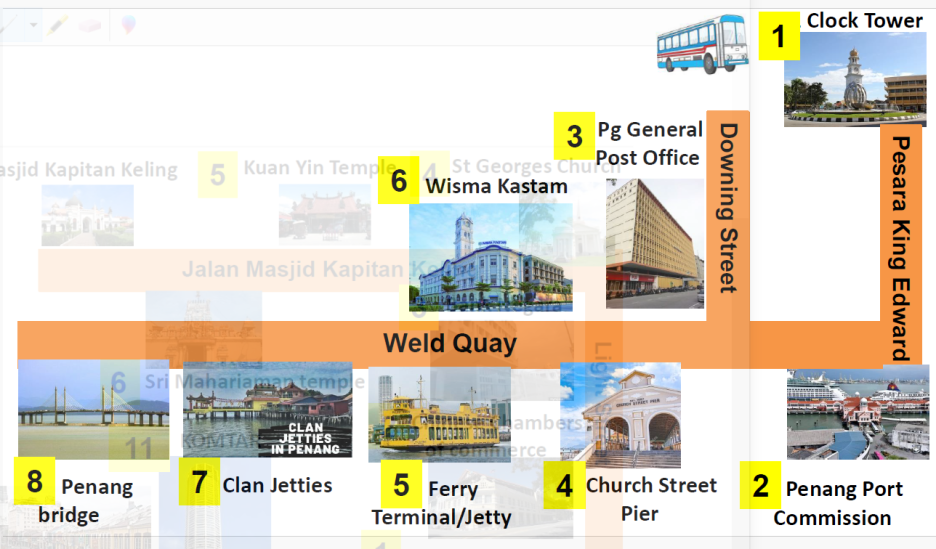Clock Tower
The Queen Victoria Memorial Clock Tower, constructed in 1897, stands at 60 feet, each foot representing a year of Queen Victoria’s reign. The slight tilt, a consequence of World War II bombings, adds a unique touch to this historical landmark, symbolizing the resilience of Penang in the face of adversity.
The Penang Port Commission plays a pivotal role in the region, as it issues licenses for various port activities and spearheads initiatives aimed at enhancing the port’s infrastructure. Beyond its regulatory function, the commission also plays a crucial role in coordinating activities within the port, ensuring seamless operations and fostering overall improvements.
The historic significance of the Penang General Post Office, situated in the Bangunan Tuanku Syed Putra, adds a layer of cultural and administrative heritage to the region. Constructed shortly after Malaya gained independence, this building stands as a testament to the post-colonial era, having once housed the Treasury during British colonial times. The continuity of administrative functions in this location underscores its enduring importance in the evolving narrative of Penang’s governance.
The Church Street Pier, constructed in 1897, reflects Penang’s maritime history and served as a key docking point for small vessels. Over the years, it also facilitated ferry services to Butterworth. In an attempt to revitalize the pier in the early 2000s, the Malaysian government aimed to transform it into a marina. Despite initial success, structural deterioration became a challenge, raising concerns about the preservation of this historical landmark.
The Ferry Terminal, also known as the Raja Uda Ferry Terminal, holds historical significance as the hub for the ferry service connecting Georgetown and Butterworth. Named after the first governor of Penang post-independence, it serves as a vital transportation link, connecting two key areas and contributing to the accessibility of the region.
Wisma Kastam, previously known as the Malayan Railway building and clock tower, designed by A. B. Hubback, represents a unique architectural gem with a ghost station history. Once occupied by the Royal Malaysian Customs, the building transitioned to an investment company in 2022. Its transformation underscores the adaptive reuse of historical structures in the face of changing needs and priorities.
The Clan Jetties, a captivating village on stilts above the water, reflects the cultural diversity of Penang. Traditionally comprising ten jetties, fires and construction activities have led to the destruction of four. The Chew Jetty, one of the surviving and most well-known jetties, stands as a living testament to the Chinese clans that once inhabited these unique structures.
The Penang Bridge, a prominent landmark with a length of 8.4 km, not only serves as a crucial transportation link but also holds a memorable historical event. Built by South Korea and opened in 1985, the bridge gained fame when former Prime Minister Tun Mahathir Mohd. drove a Proton Saga across it as part of a promotional campaign, symbolizing progress and modernization.
